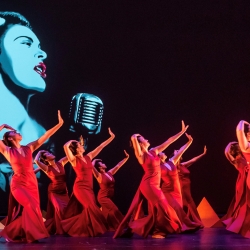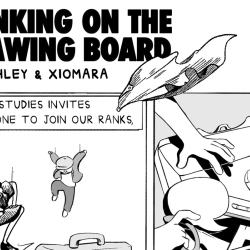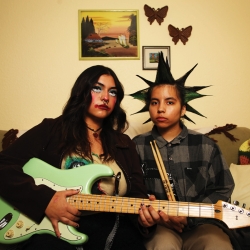
By Ben Fong-Torres
“Reach out your hand if your cup be empty If your cup is full, may it be again…”
—Lyrics by Robert Hunter
That line from the Grateful Dead song “Ripple” appears to be Chris Larsen’s credo. The 1984 graduate (B.S., International Business, Accounting) and 2004 Alumnus of the Year is all about giving back — and then some. His contributions to his alma mater range from scholarships for business students to a $25 million donation, in cryptocurrency, in 2019. The gift, from Larsen, his wife Lyna Lam and Rippleworks, a nonprofit co-founded by Larsen, led to the University renaming its business school the Lam Family College of Business.
Since the mid-’90s, Larsen’s ventures have had pro-consumer components, including financial privacy, the ability to access credit scores and direct transfers of funds, bypassing traditional banks. His payment protocol, Ripple, created its own digital currency, XRP.
Larsen, 63, has donated millions to small retailers in San Francisco, to pay for security cameras in various neighborhoods, to food banks and to a marketing campaign to boost the city’s image. He also is committed to addressing climate change and has contributed over $120 million through the Lam-Larsen Climate Change Foundation.
What’s your strongest memory of your time at SF State?
This is a million years ago, but when I was there, somewhere there was a protest every single day, and that was kind of cool. That was something that always stood out to me. Maybe I should have done more protesting. But I was more of an observer back then.
In your Alumni Hall of Fame acceptance speech, you thanked the University “for all of the tools and the foundation for my good fortune. It was a phenomenal experience for me.” What drove that comment?
SF State gave me the foundation to start a career, originally in accounting, and those were just really concrete tools. Nothing flashy or fancy. It was just, “OK — got a job to do, and I’m going to get that job.” And I did, by the tools that they gave me — and for the bargain price of like $100 a semester.
How did you zero in on International Business and Accounting in the mid-’80s? Is that rooted in your childhood?
I grew up in Cupertino. That’s where my parents had moved after they lived in San Francisco. I went to San José State and took engineering for the first two years, and then I got really interested in this program that took me over to Denmark. The [San José] State students get to go over there, spend a year. But the program was in International Business. So we got to travel all over Europe, into Eastern Europe when the Iron Curtain was still up, [and explore it] from a business and “How do you move society along?” [perspective]. Very different from engineering. I was in aeronautical engineering before, very nuts and bolts, because my dad worked as a mechanic at United Airlines. But I liked the business side of it. So when I got back from Denmark, I transferred to SF State, and that’s how I got interested in business.
After your studies at SF State, you became what you said was “radically pro-consumer.” What experiences in the business and financial world led you to that stance? E-Loan provided consumers their FICO credit scores, and that goes back to around 2000. And you supported Assemblywoman Jackie Speier’s financial privacy bill in 2003.
Yeah, those were really good fights. I always had a little bit of a chip on my shoulder. My dad worked so hard. But he was kind of falling behind, and he was always getting taken advantage of in [finance]. Doing home equity loans to pay the bills, they kind of struggled, and he was always angry about that. So I looked more into the industry, and they have an old saying: “In confusion, there’s profit.” And finance is the gray area where you can confuse your customer and make a ton of money. So that seemed pretty outrageous, and credit scores were at the heart of that.
I could convince you that, “Oh, gee, you couldn’t see your score,” next to the guy in front of you, who could see the score. And I’d be like, “Oh, boy, this score is not that good. I’m gonna have to charge more.” So that’s why they didn’t want you to see it. So we took on that fight and we had a lot of pushback. But it ended up [feeling] really satisfying when we had a breakthrough. I think we helped unleash [people’s credit scores].
You went on, around 2012, to co-found Open Coin, which developed a new payment protocol, Ripple. Is that named after the Grateful Dead song?
That’s right. That’s very good. So there’s this awesome guy that owned the rights to the Ripple name, because he had a 900 number back in the day for Grateful Dead information before there was a Web. Everybody was trying to buy the name.
The whole idea of creating a Bitcoin competitor was you would give away the coin to the world, right? So the idea was, “There is a fountain.” It was a song about death, but also a fountain that distributes these coins. I love that idea, and then, also, “rippling around.” I went to a bunch of Grateful Dead concerts, before Jerry Garcia passed away. I was maybe on the tail end. So that was very much consistent with the way we were thinking about things, [and] we were able to meet this guy and offer him shares in the company. And we got the name, and it worked out really well for him.
Chris, about how well did it work out for him?
I guess that would have been worth about $100,000 [at the time], and I think it ended up maybe worth about $30 million something. It was good.
Wow. He did great. But on the subject of cryptocurrency, how can people trust investing in cryptocurrency today? I think many people do not understand or trust cryptocurrency, especially with the FTX/Sam Bankman Fried scandal.
Obviously, that was a catastrophe for the industry. But at the end of the day, it really had not as much to do with crypto than a kind of a garden variety fraud that will happen from time to time.
But people should be always careful about new technology, especially ones involving money. But it’s a technology that is fundamentally improving the world, particularly in the world of cross-border payments. That’s really why we’re in it, and that’s what we’re grateful for.
You and your family are clearly in love with San Francisco, and these past several years, we hear all about the so-called “Doom Loop,” an encapsulation of the myriad problems and issues connected to the city. What motivated you to co-create the $4 million “It All Starts Here” marketing campaign to boost the city’s reputation?
Well, we do have issues in the city, so we cannot paper over them. The campaign is one of several things we’re doing. We agree we’ve got to do fundamental improvements in our bureaucracy. We have absolute key problems, solving homelessness and drug abuse and housing affordability, and encouraging innovative businesses to be here. And we’re working on those. But at the same time, San Francisco has a unique perch where we represent something to a lot of the country that’s really opposed to our way of living. … They’re using us as a punching bag. “If you let the liberal way of life carry the day, this is what’s gonna happen to you.” That’s really unfair. We’ve got to work on our problems, but we cannot let our brand be taken over by political opportunists.
The good news is, we’re making progress. I’m super optimistic. We’re the AI capital of the world, among many other things. So I think, forget the “Doom Loop.” I think that’s passed.
Do you find it odd that a big city with a big budget still needs assistance from essentially private philanthropy?
Yes, [the city has] a $14 billion budget. But we’re so bureaucratic that if the mayor said, “Hey, there’s a crime problem over at the Palace of Fine Arts, we’re going to do a camera network there,” it would probably take years to get that through. And then the Board [of Supervisors] would debate it endlessly. It would probably just never happen. Where can philanthropy come in? I think we spent about $5 million on cameras throughout the city, and that would dramatically help with public safety. So that’s where philanthropic dollars come in and get things done.
Climate change is another of your major concerns, and you have created the Larsen-Lam Climate Change Foundation.
It’s actually what I spend most of my time on now. Obviously, climate is an emergency. We’ve got to get on it, and that has to be handled at every level. Governments and private citizens, policy work, technology work, economic work — it’s like an all hands on deck thing. It’s a thousand-front war, and I think we can contribute to that, and we’ve picked a couple of fronts. Carbon dioxide removal [for example]. We fund zero emission fuels as another area, like green hydrogen sustainable fuels.
We have the resources to help and, frankly, it’s actually kind of a fun area. I’m even getting my kids involved in it. My older son just turned 17, and he’s going to do an internship in some climate areas. And things are moving. This is not a tomorrow thing. The energy transition is right now; the cheapest price energy are renewables today. So it’s pretty cool. We’re in the midst of a transition. It’s unstoppable.
Your generosity has also been evidenced greatly at San Francisco State. You have made numerous and different levels of contributions. But there was the one in 2019 for $25 million — one of the biggest gifts in SF State history!
Well, I went to SF State and I went to Stanford [for an MBA]. And I always scratch my head [and think], “Why does Stanford get so many contributions?” They’re great, but oh my God, the level of contribution that goes into Stanford so dwarfs anything SF State has seen. So we just wanted to see if we could move the needle a little bit. And I think they’ve made great use of it. And again, I paid 100 bucks a semester. So: bargain of the century!

Features

Dance Masters
Associate Professor of Dance Ray Tadio and alumnus and kumu hula (master hula teacher) Patrick Makuakāne use groundbreaking approaches to traditional dance to express who they are and where they come from.

Novel Graphics
SF State students working toward a Creative Nonfiction Comics Making certificate tell the story of the innovative program through the very medium they’re learning to master: comics!

Facing the Music
Gator musicians step off the stage and in front of the cameras for a class project teaching Journalism students the basics of portrait photography.